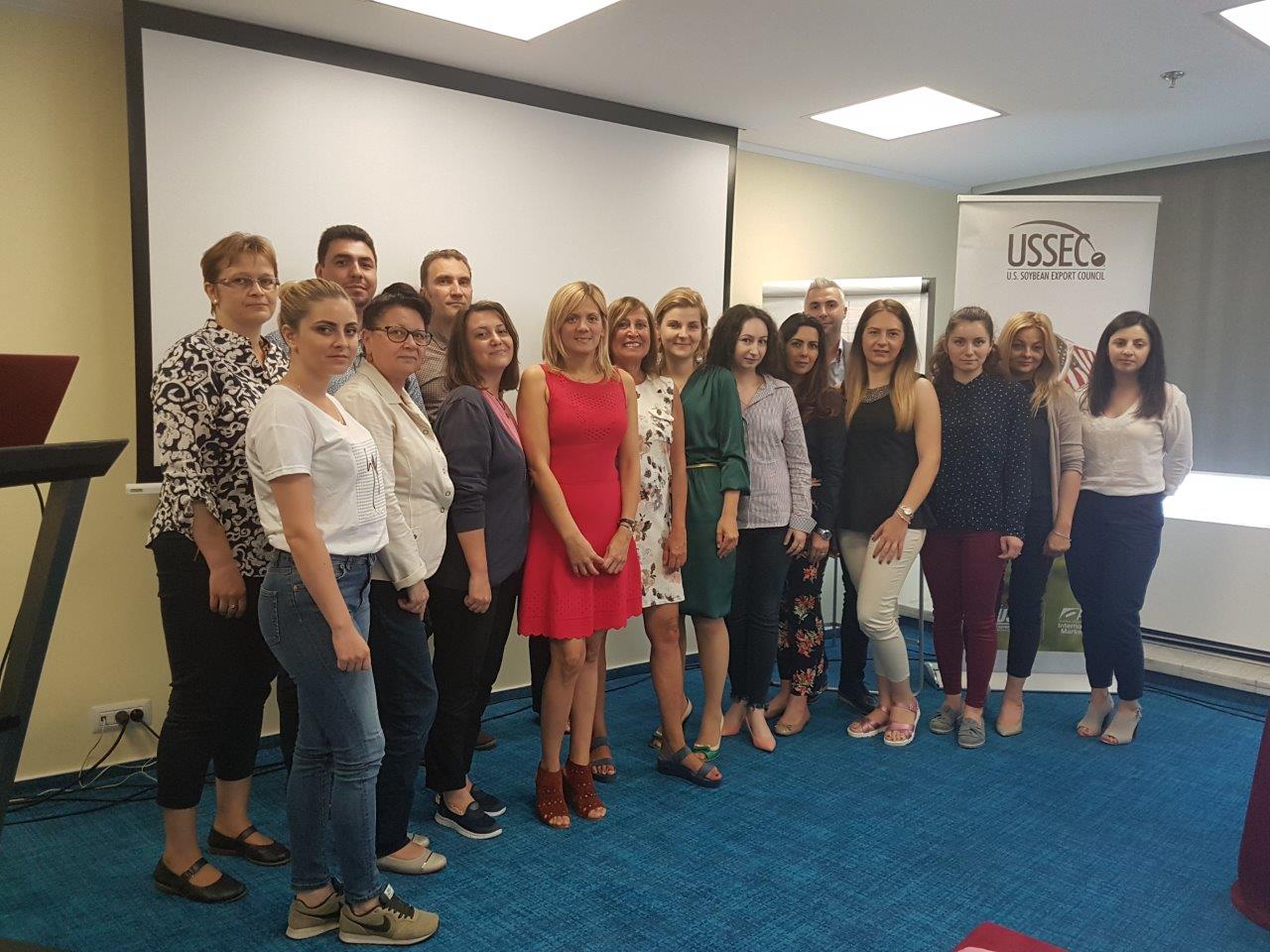Romanian Soy End Users Attend USSEC Quality Control Training on NIR Technology
- Category:
- Animal Utilization
- General News

To disseminate knowledge on Near Infrared (NIR) technology as a rapid method to differentiate between origins and increase the awareness of U.S. Soy’s quality, USSEC organized a two-day training course, “NIR and Quality Control of Ingredients and Feed Compounds,” in Bucharest, Romania during the first week of June.

USSEC invited two top NIR experts from the University of Córdoba, Spain, Dr. Ana Garrido-Varo and Dr. Dolores Pérez-Marín, to speak at this event.
Dr. Garrido-Varo promotes the growth and development of at-line and on-line NIRS analysis in the European and worldwide food and animal feed industry through targeted research & training initiatives, while Dr. Pérez-Marín works a professor at the Faculty of Agriculture and Forestry Engineering (ETSIAM), University of Córdoba, Spain.
The goal of the event was to educate quality control managers, nutritionists, and researchers in properly using and calibrating the NIR machines as a tool to rapidly characterize feed ingredients for moisture, crude protein, fats, crude fiber, and other proximate analyses. Today’s feed industry understands the advantages of real time or close to real time analysis and how to make decisions on segregating incoming raw materials and constantly monitoring the quality of feed compounds. However, there is still a lack of knowledge regarding these issues.
The presentations provided by Dr. Garrido-Varo and Dr. Pérez-Marín during the two days of training largely illuminated concerns and answered the technical NIR questions raised by the audience. Meantime, the participants showed a substantial interest in learning how to improve NIR applications based on better reference methods and correlating the analytical results with animal performances. They also asked how NIR should be used for new applications, such as protein durability index and measuring mixing uniformity and reading of ingredient composition of an unknown feed compound. After each presentation, discussions were guided by a series of conversational questions, which encouraged interaction and later, one-on-one discussions after the end of the training.
The event provided a good understanding of the Romanian feed industry’s current perception, thinking, and knowledge on the implementation of NIR and how this should be better used to accurately analyze and capture the value of U.S. Soy.
Thanks to the efforts of Dr. Garrido-Varo and Dr. Pérez-Marín, the training is an important milestone for the Romanian feed industry, but the industry is on a journey that still has some challenges and more milestones ahead. NIR calibration process is a continuous, ongoing process because of the variation of the feed ingredients, sampling procedures, lab conditions, and processing conditions.




